The extensive monograph Abraham Palatnik: Encantamento/Experimentação (Enchantment/Experimentation) celebrates the prolific career of the late Brazilian artist, a pioneer of kinetic and optical art. The son of Jewish immigrants who left Russia in 1919, Palatnik was born in 1928 in northeastern Brazil and studied engineering in Tel Aviv before settling in Rio de Janeiro, where he trained in painting. He would later abandon painting to focus on creating motorised light sculptures, including a work that was shown in the first São Paulo Bienal in 1951 to critical acclaim. Palatnik died in Rio de Janeiro from complications related to the coronavirus, aged 92. His work is held in major international collections, including the Museum of Modern Art in New York. The visually remarkable publication coincided with a career-spanning exhibition organised by Galeria Nara Roesler in January this year, titled Abraham Palatnik: Seismograph of Colour. The book is available in both English and Portuguese.
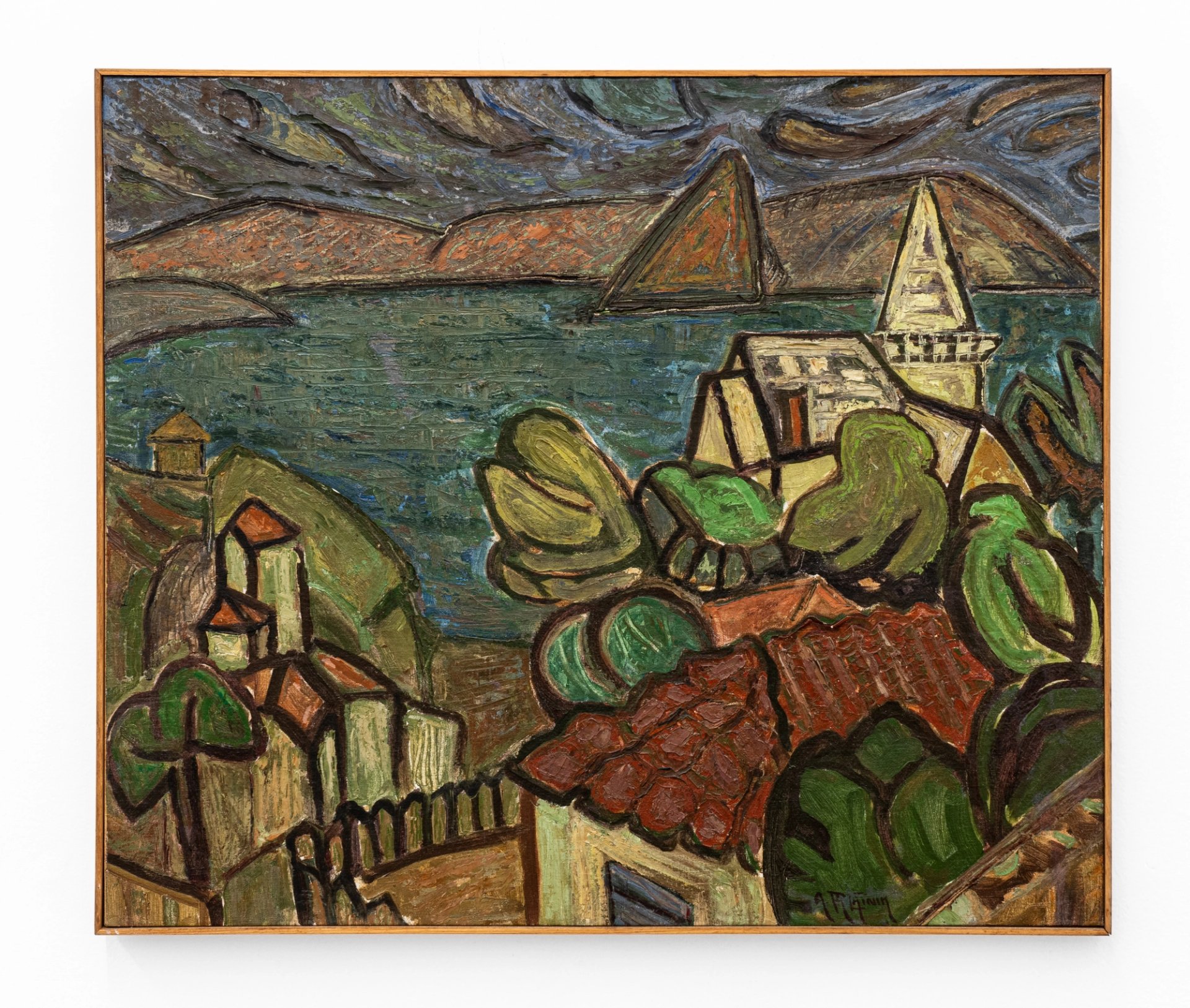
Abraham Palatnik, Untitled (1947-48). Courtesy the artist’s estate and Nara Roesler. Photo: Erika Mayumi.
The art scholar Kaira M. Cabañas describes an epiphanous moment in Palatnik’s practice that surfaced between 1949 and 1951, when the artist frequently visited the art studio of a psychiatric hospital in Rio de Janeiro and “could not grasp the impressive work of the clinic’s unschooled artists” despite his formal art training. Palatnik, who was painting figurative self-portraits, still-lifes and scenes of the mountainous Rio de Janeiro landscape at the time, explained: “What I saw was no longer figuration. It was something coming out from the inside, and I had had nothing inside. I saw that my world was ending. My castle had collapsed. I was very overwhelmed, bewildered.”
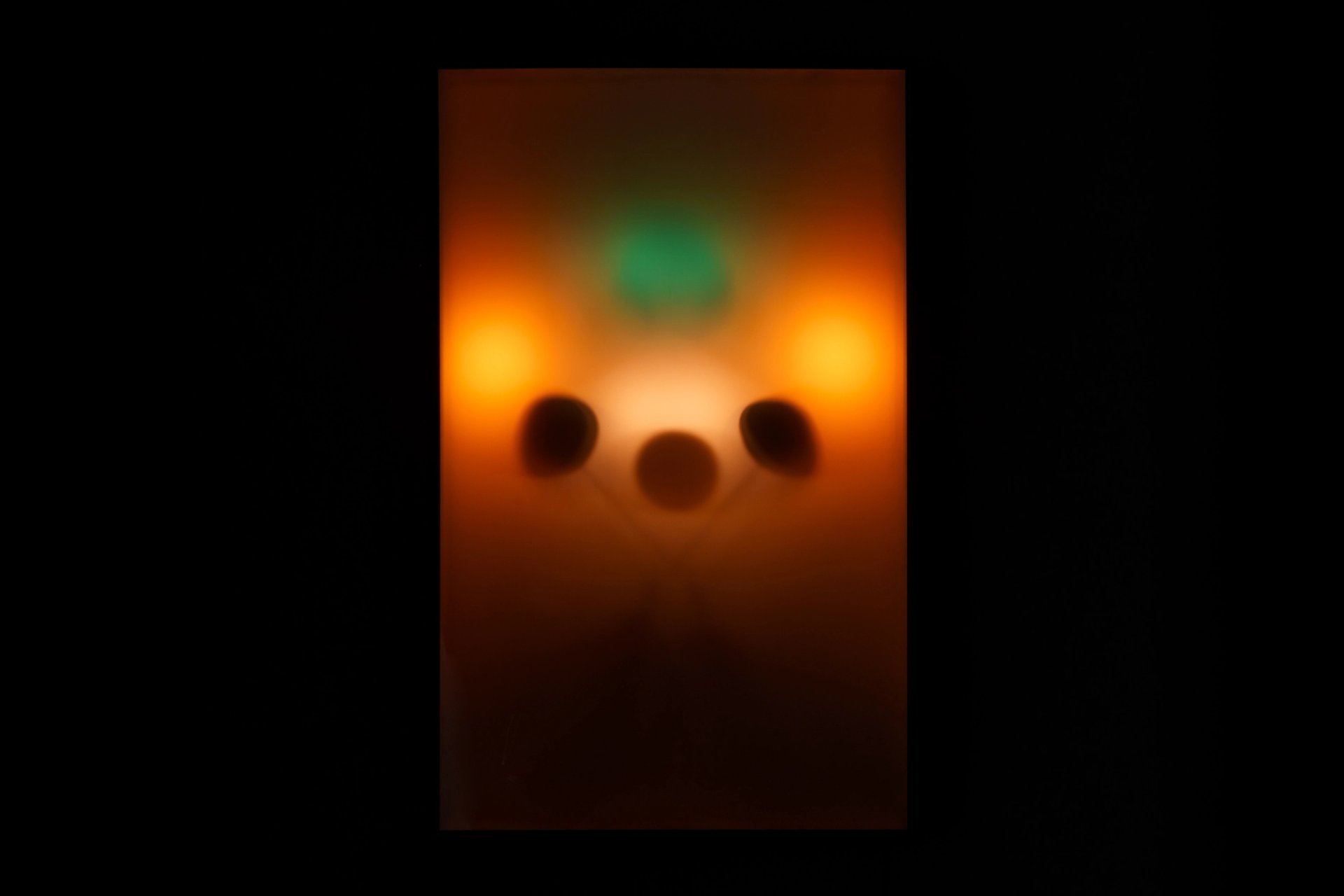
Another view of the previously pictured work, Abraham Palatnik’s Kinechromatic device (Verical sequence S-30) (around 1950s). Courtesy the artist’s estate and Nara Roesler. Photo: Flavio Freire.
Palatnik’s years-long engagement with the art of psychiatric patients led him to challenge his previous artistic practice. The artist had studied physics and mechanics during the Second World War and began creating experimental motorised paintings that would become known as his “aparelhos cinecromatico” (kinechromatic devices)—the arguably most celebrated focus of his decades-long career. The works, which Palatnik first made from light bulbs, fabric and a motor connected to an electrical source, comprise a timed cycle of swirling colours that are choreographed to create a diaphanously hypnotising composition that is constantly changing.

A third view of the previously pictured work, Abraham Palatnik’s Kinechromatic device (Verical sequence S-30) (around 1950s). Courtesy the artist's estate and Nara Roesler. Photo: Flavio Freire.
On this significant facet of Palatnik’s practice, the curator Luis Pérez-Oramas writes: “As in organs internal to the body, something is happening in [Palatnik’s kinechromatic devices] that we cannot see, and what we do see moving in them is the result of this secret mechanism. On the screens of these archaeological light boxes we see forms, colours, shadows, but none of these are themselves the movement of the artwork—the kinesis of the kinetic machine. [...] One must conjecture that all of Palatnik’s displacements and radical encounters with creativity as an energy emerging directly from untutored human intelligence [...] was the necessary precondition for a modern kinechromatic utopia to find its true birth. [...] We see not the machine itself, or its parts, but the exact opposite, the other face, of cinema: not the halo of light in which cinema’s projected frames so dynamically arrive, but shadows and illuminated forms emerging from within.”
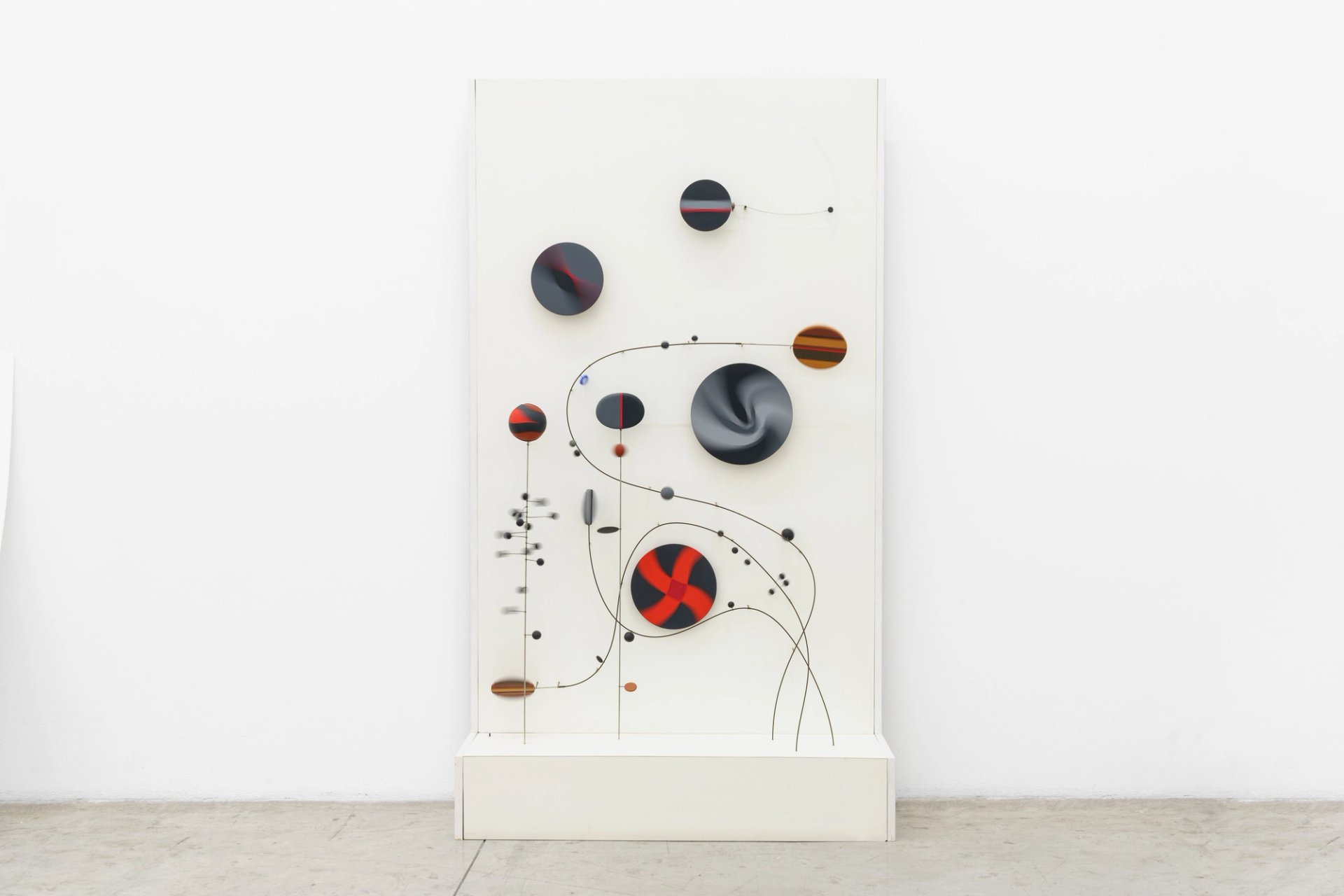
Abraham Palatnik, Objeto Cinético (1968/2006). Courtesy the artist's estate and Nara Roesler. Photo: Flavio Freire.
Palatnik later created kinetic sculptural wooden pieces, such as this work that comprises a delicate constellation of shapes. Some of pieces from this body of work were shown at the 32nd Venice Biennale.
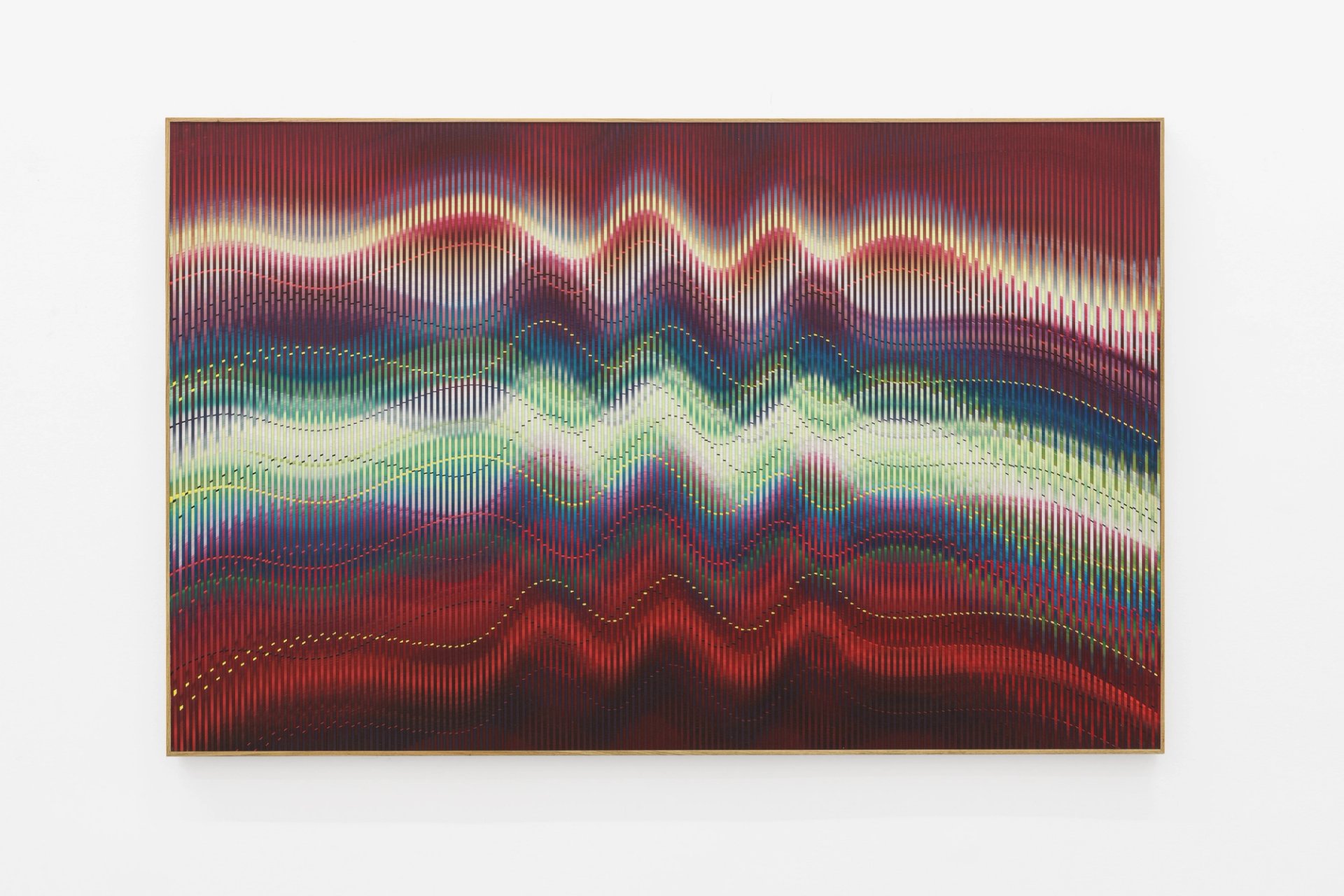
Abraham Palatnik, W-H180 (2019). Courtesy the artist's estate and Nara Roesler. Photo: Flavio Freire.
Palatnik’s exploration of the optical effects of movement is also evident in his Progressão (Progression) works, made from a series of undulating rectangular strips of wood that were sometimes painted or left raw to expose the natural luster of the materials, often jacaranda trunks or rosewood. The compositions resemble magnetic fields that compellingly appear to follow but also amplify the longitudinal arrangement of the wood grain, conveying a both naturalistic and otherwordly frequency. Palatnik also created glass compositions in a similar vein.
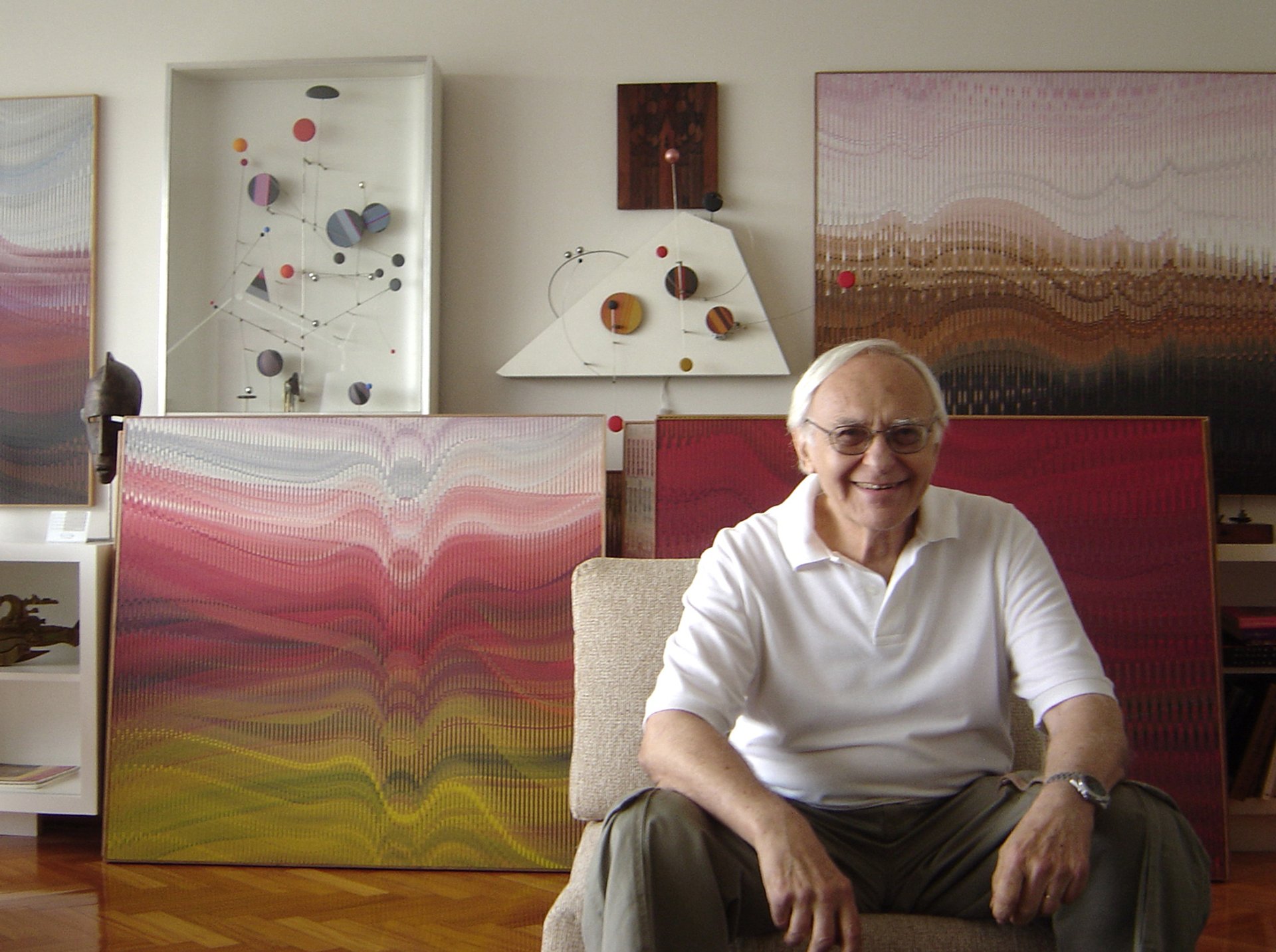
The artist Abraham Palatnik in his studio. Courtesy the artist's estate and Nara Roesler.
- Abraham Palatnik: Enchantment/Experimentation, texts by Abigail Winograd, Eduardo Kac, Frederico Morais, Gabriel Pérez-Barreiro, Hans Ulrich Obrist, Jayme Mauricio, Kaira Cabañas, Luis Pérez-Oramas, Luiz Camillo Osorio, Mario Pedrosa and Walter Zanini, Nara Roesler Books, 354pp, $136


